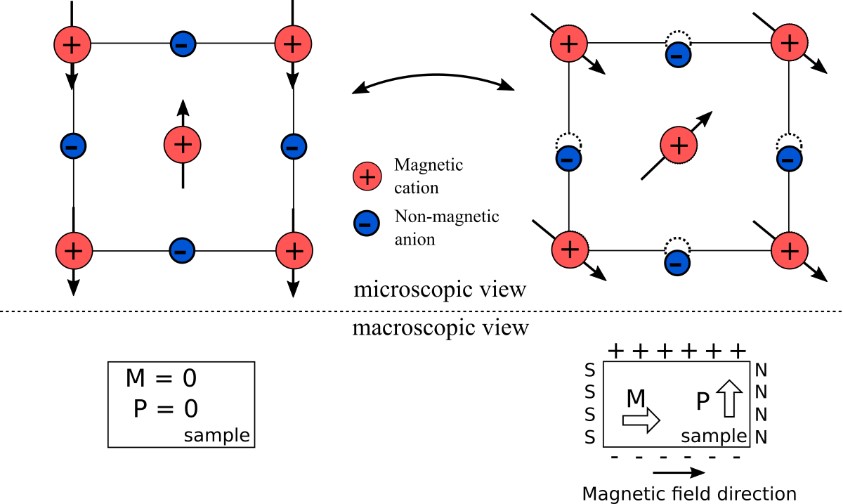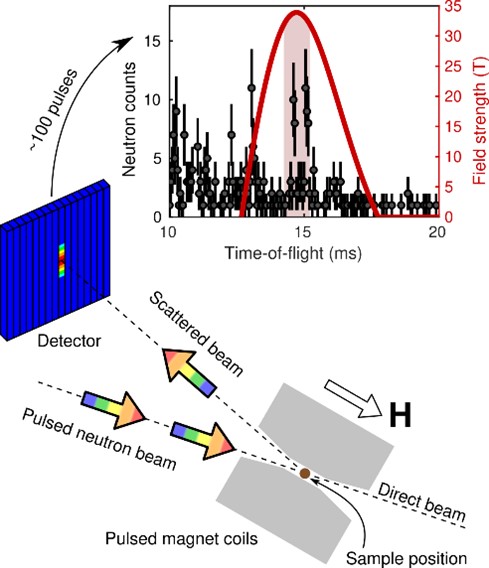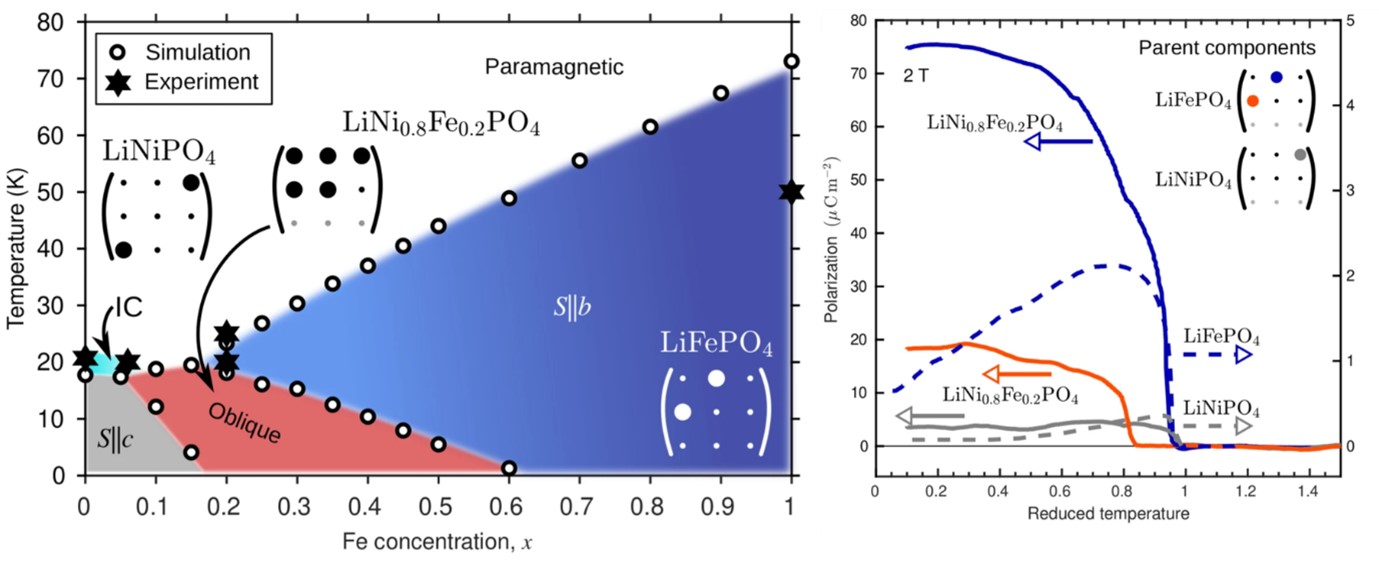Multiferroic Materials

In the MAGNET section, one of the main foci is research into multiferroic and magnetoelectric materials. In these materials, electric polarization and magnetic order either co-exist or are directly coupled, enabling electrical control of magnetization or control of electric polarization via application of a magnetic field (see Figure 1). This mechanism may find future use in complex next-generation information technology, enabling logic and storage devices with low power consumption or as a control handle in spintronics devices.

At MAGNET, we focus on the fundamental science of understanding these complex materials. Employing neutron and x-ray diffraction techniques, we investigate the interplay of complex magnetic structures and the atomic displacement of ions in the crystal lattice. Using neutron spectroscopy, we investigate the magnetic couplings giving rise to magnetic order, and the exotic magnetoelastic excitations resulting from the spin-lattice coupling. In order to study the many realizations of the magnetoelectric effect, we often apply magnetic and electrical fields to our samples, often at temperatures below 5 K. In a recent study, we employed pulsed magnetic fields up to 35 T in order to observe a reorientation of magnetic moments. Due to the magnetoelectric effect, the electric polarization flipped, along with the magnetic structure. The pulsed field-neutron diffraction setup is shown in Figure 2.
